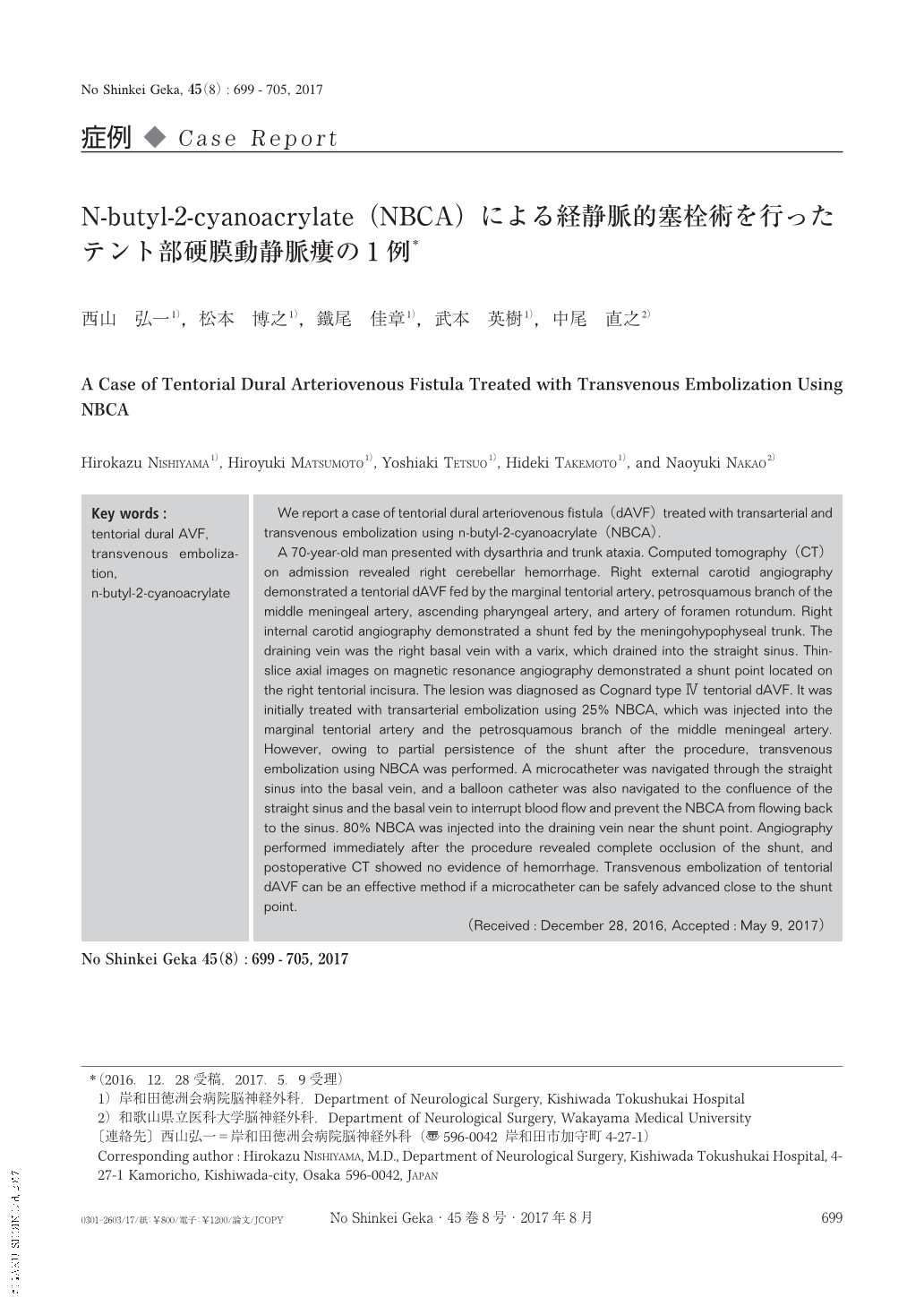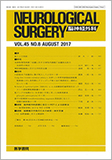Japanese
English
- 有料閲覧
- Abstract 文献概要
- 1ページ目 Look Inside
- 参考文献 Reference
Ⅰ.はじめに
テント部硬膜動静脈瘻(dural areteriovenous fistula:dAVF)は,全dAVFのうち4.8%と非常に稀な疾患である8).しかし出血発症が多く,静脈梗塞や頭蓋内圧亢進症状などaggressive featureを呈するとされるため,積極的な治療を必要とする1,3,7,8,11-13).今回,小脳出血で発症したテント部dAVFに対して,n-butyl-2-cyanoacrylate(NBCA)を塞栓物質とした経動脈的塞栓術(transarterial embolization:TAE)によるflow reductionを行った後,NBCAによる経静脈的塞栓術(transvenous embolization:TVE)でシャントの消失を得た症例を経験したので報告する.
We report a case of tentorial dural arteriovenous fistula(dAVF)treated with transarterial and transvenous embolization using n-butyl-2-cyanoacrylate(NBCA).
A 70-year-old man presented with dysarthria and trunk ataxia. Computed tomography(CT)on admission revealed right cerebellar hemorrhage. Right external carotid angiography demonstrated a tentorial dAVF fed by the marginal tentorial artery, petrosquamous branch of the middle meningeal artery, ascending pharyngeal artery, and artery of foramen rotundum. Right internal carotid angiography demonstrated a shunt fed by the meningohypophyseal trunk. The draining vein was the right basal vein with a varix, which drained into the straight sinus. Thin-slice axial images on magnetic resonance angiography demonstrated a shunt point located on the right tentorial incisura. The lesion was diagnosed as Cognard type Ⅳ tentorial dAVF. It was initially treated with transarterial embolization using 25% NBCA, which was injected into the marginal tentorial artery and the petrosquamous branch of the middle meningeal artery. However, owing to partial persistence of the shunt after the procedure, transvenous embolization using NBCA was performed. A microcatheter was navigated through the straight sinus into the basal vein, and a balloon catheter was also navigated to the confluence of the straight sinus and the basal vein to interrupt blood flow and prevent the NBCA from flowing back to the sinus. 80% NBCA was injected into the draining vein near the shunt point. Angiography performed immediately after the procedure revealed complete occlusion of the shunt, and postoperative CT showed no evidence of hemorrhage. Transvenous embolization of tentorial dAVF can be an effective method if a microcatheter can be safely advanced close to the shunt point.

Copyright © 2017, Igaku-Shoin Ltd. All rights reserved.


